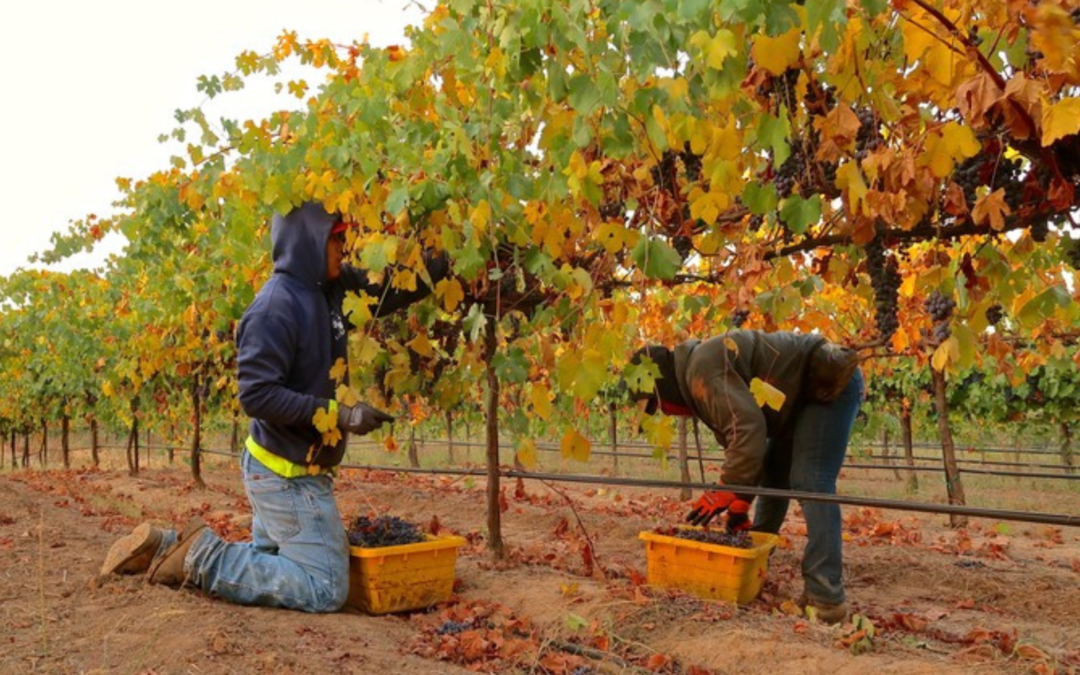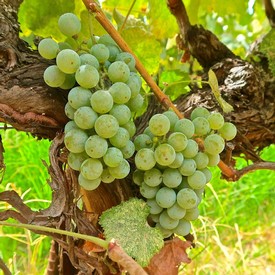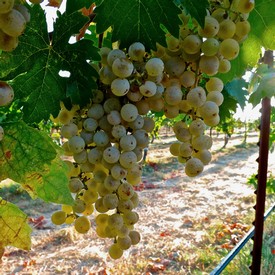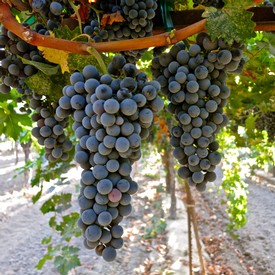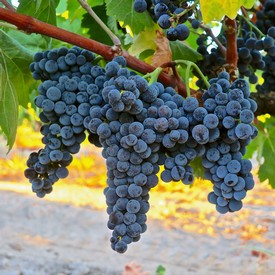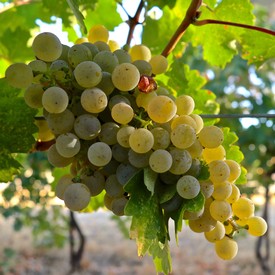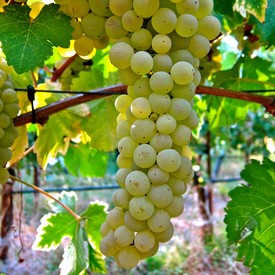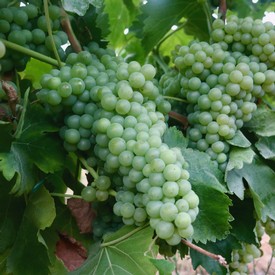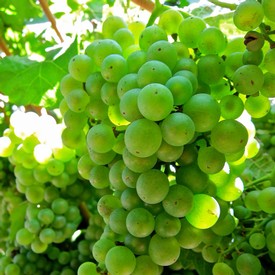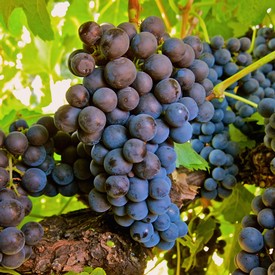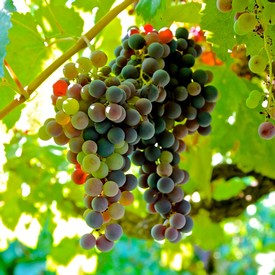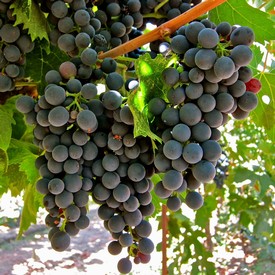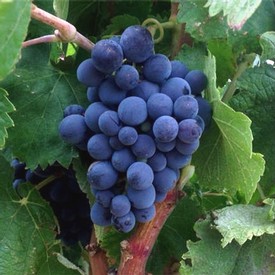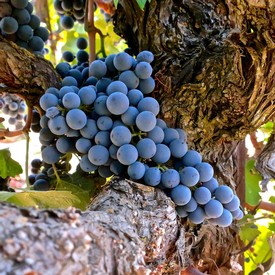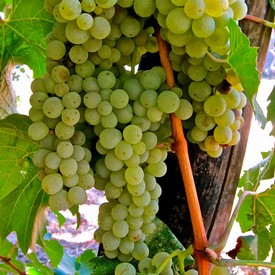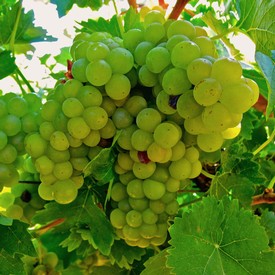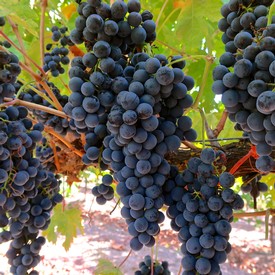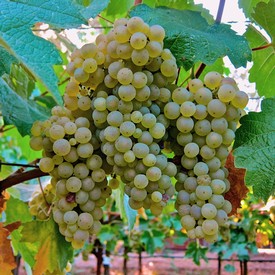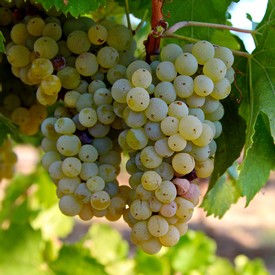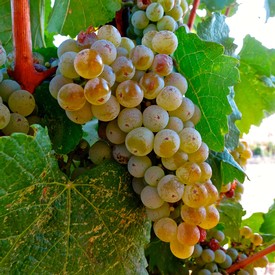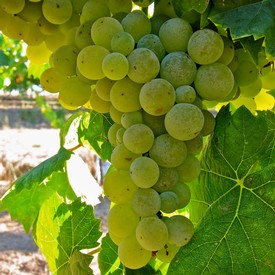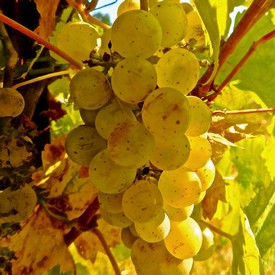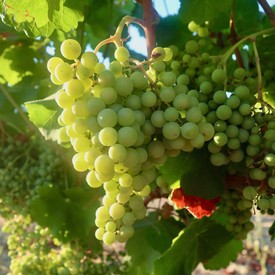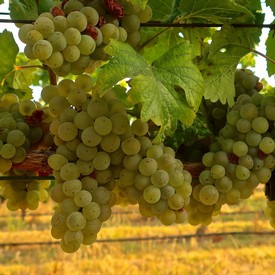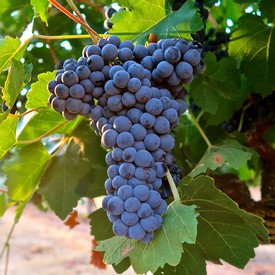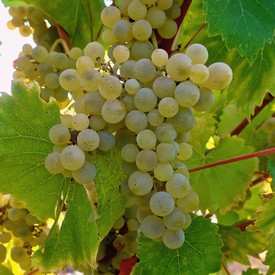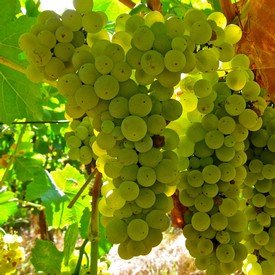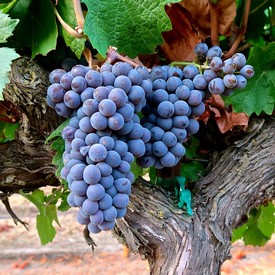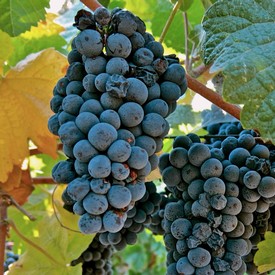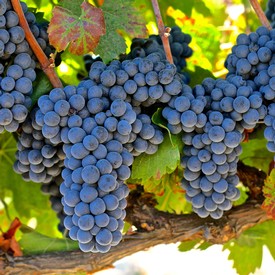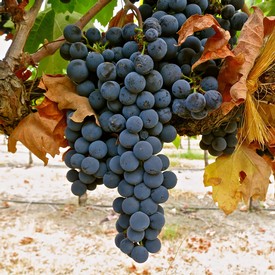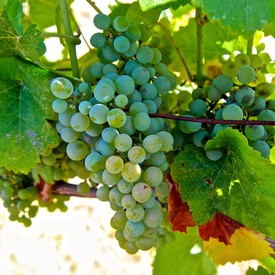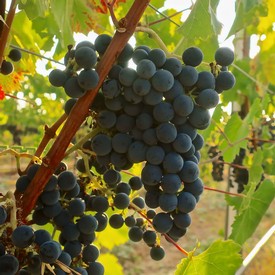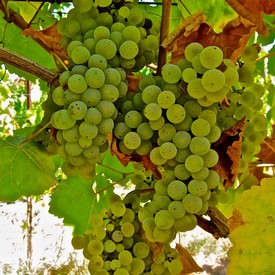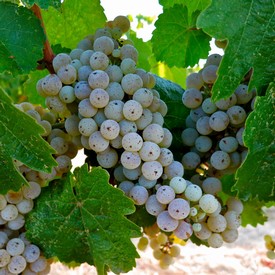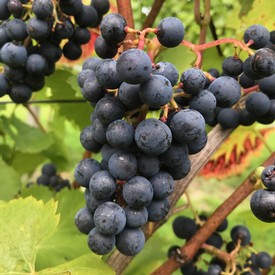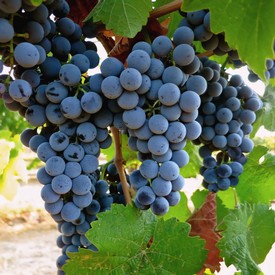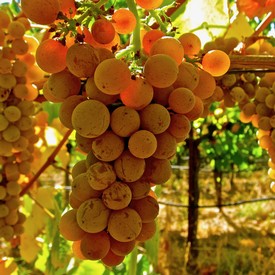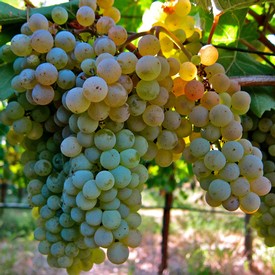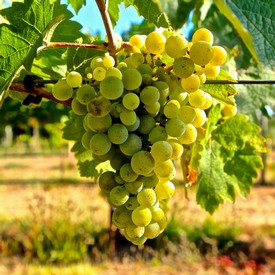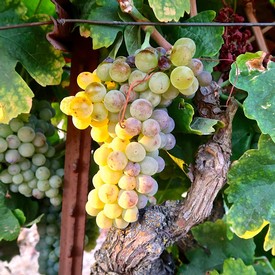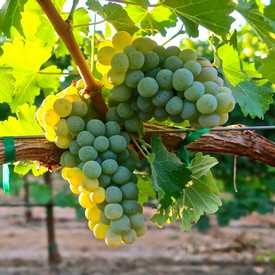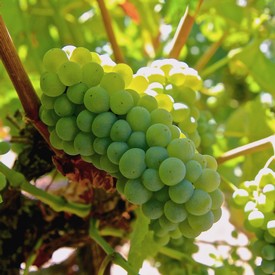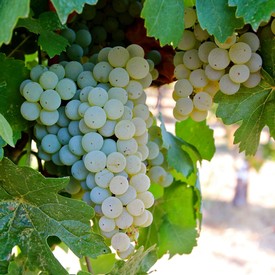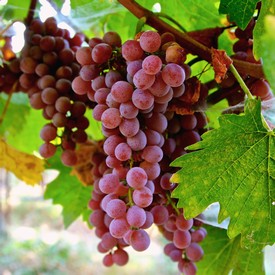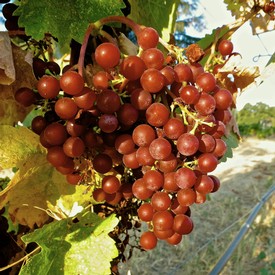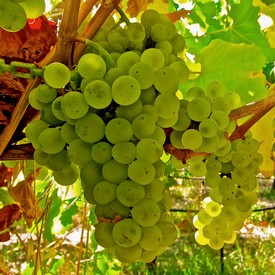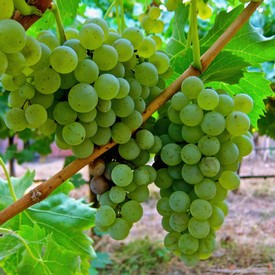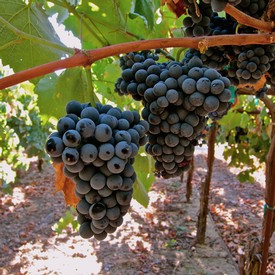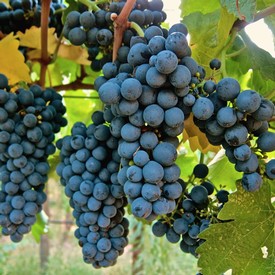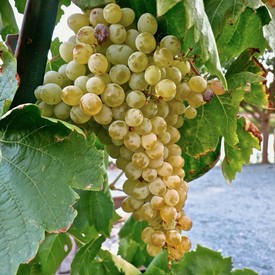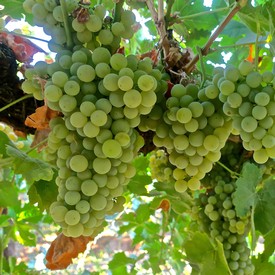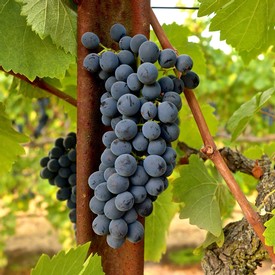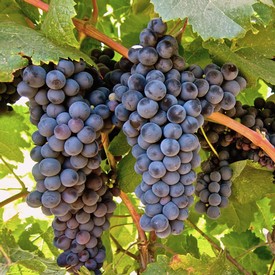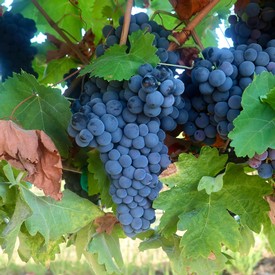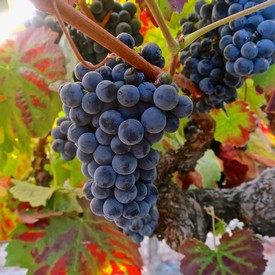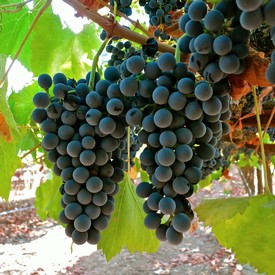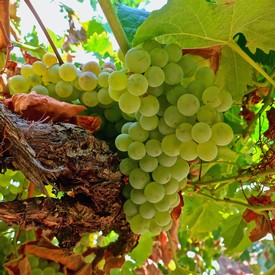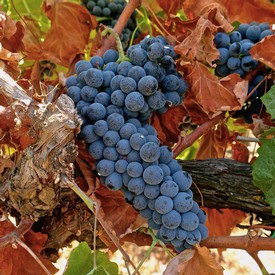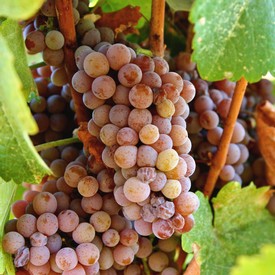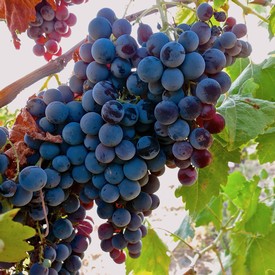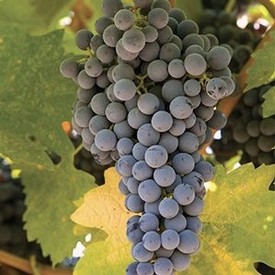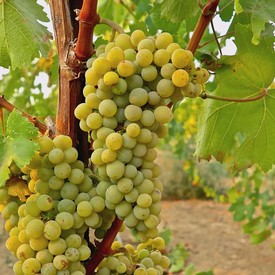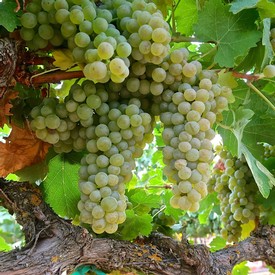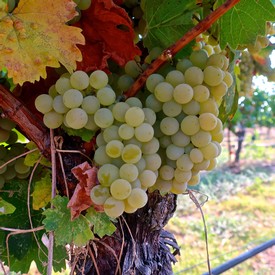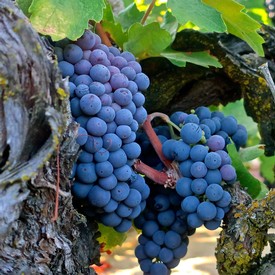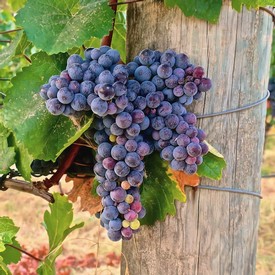MONDAY, APRIL 15, 2024. BY RANDY CAPAROSO.
Featured Image: Harvesting of Nebbiolo—a rare (for California) grape native to Italy’s Piemonte region—in Clements Hills-Lodi’s Anaya Vineyards.
When the first-ever scholarly book on Lodi winegrowing was published in 2022, an entire chapter was devoted to 130 grapes, complete with photographs, representing each and every variety commercially grown in the appellation [Lodi! The Definitive Guide and History of America’s Largest Winegrowing Region (2022, KitchenCinco Press)].
Almost immediately after this 400-page tome was published, it was out of date. At least insofar as grape varieties.
A few grapes listed in the 2022 publication have since been dropped by growers, just over the past three years. A larger number has been added, simply because both new and established growers in Lodi have been a restless lot, busily cultivating brand-new (at least for Lodi, if not most of California) varieties. The winegrowing industry, after all, is a fluid business, controlled by supply and demand, consumer trends, and economic factors.
Grüner Veltliner (a native Austrian grape) harvest in Mokelumne River-Lodi’s Mokelumne Glen Vineyards.
See our September 6, 2022 post on Lodi grapes not listed in the Lodi! book that was just harvested in 2022: Ancellotta, Assyrtiko, Chardonnay rosa, Macabeo, Parellada, Prieto Picudo, and Xarell-lo are among the latest grapes of Lodi.
Our official count for the number of commercially planted grapes in Lodi is now up to 136. All of these cultivars are variations of Vitis vinifera; meaning, belonging to the original European family of winegrapes.
Lodi grows more grapes than any other wine region in the United States—including more than all of Napa Valley and Sonoma County put together—because, well, grapes going into wines most Americans actually drink have to come from somewhere. Many consumers across the country think Napa Valley is California; although in reality, most Americans do not drink $50 or $100 wines now typical of those grown in Napa Valley.
Hand-picking Assyrtiko—an ancient white winegrape of Greece—in the Perlegos Family’s Clements Hills-Lodi vineyard.
According to most recent economic research, the average price of a bottle of wine sold in the United States as of 2024 is $10.08, which is slightly up from the $9.26 average bottle price in 2020 (see FRED Economic Data).
It is in Lodi where most of the grapes going into value-priced wines are grown. These are wines produced by most of the seven largest domestic wine producers (according to Silicon Valley Bank’s 2024 State of the U.S. Wine Industry’s report: E. & J. Gallo Winery, The Wine Group, Constellation Brands, Trinchero Family Estates, Deutsche Family Wine & Spirits, and Ste. Michelle Wine Estates).
Why Lodi? For the same reason why, during the 1960s and ’70s, most premium grapes going into $10 wines used to come from Napa Valley and Sonoma County: Because these are good places to grow grapes.
Haarmeyer Cellars’ Craig Haarmeyer field-sorting Chenin blanc—a grape that was far more popular in California during the late 1960s and early 1980s, but now making a modest comeback—in Lodi’s Alta Mesa AVA.
The latest grapes being cultivated in Lodi, however, reflect the tiny yet growing consumer interest in more unusual wines, which are generally produced by the tiny yet growing number of small, handcraft wineries, as opposed to the gigantic, multi-brand companies. Ergo, the following 10 cultivars were most recently added to the list of grapes grown in Lodi:
- Albana
- Ancellotta
- Centesimino
- Chardonnay rosa
- Famosa
- Greco
- Grenache gris
- Morenillo
- Prieto Picudo
- Uva Longanesi
Bokisch Vineyards’ Markus Bokisch monitoring the progress of his Macabeu grapes—a traditional cava (i.e., sparkling wine) grape of Spain—in his Miravet Vineyard at the northern edge of Clements Hills-Lodi.
Granted, five of the aforementioned grapes are still being cultivated on an “experimental basis,” in the words of owner/grower Chef Jake Des Voignes. According to Chef Jake (Des Voignes’s day job is at Wine & Roses Hotel, where he serves as Food & Beverage Director), “I have only seven vines each of these grapes, although I plan to expand all of them to 40 vines by next year [2025].”
Des Voignes is quite an eclectic and curious east-side Mokelumne River-Lodi AVA grower. In his family-owned Fernow Ranch, he cultivates several rows each of varieties that appeal more to tiny, handcraft wineries; including Clairette blanche, Counoise, Graciano, Greco, Grenache noir, Mourvèdre, Muscat blanc, Nero d’Avola, Piquepoul, Tempranillo and Verdejo.
Chef Jake Des Voignes harvesting Fiano—a grape of Campania in Italy—in his family’s Fernow Ranch on the east side of Mokelumne River-Lodi.
The other reason why growers such as Des Voignes, LangeTwins Family (cultivating the Ancellotta and Chardonnay rosa), PRIE Winery (Prieto Picudo) and Bokisch Vineyards (now producing varietals and blends from cava grapes such as Macabeo, Parellada and Xarell-lo) are now exploring unusual grape is a little simpler: Because they can.
That is to say because the region’s classic, moderate Mediterranean climate classification is naturally conducive to winegrapes—almost any kind of winegrape, but especially those that originated in the Mediterranean Basin as long ago as 2,500 years, if not earlier. Hence, Chef Jake’s compelling interest in indigenous Mediterranean grapes such as Albana (said to be a favorite of ancient Romans in Emilia-Romagna), Centesimino (a black-skinned grape, also from Emilia-Romagna), Famosa (a white winegrape native to Emilia-Romagna), Morenillo (a black-skinned grape indigenous to Spain’s Terra Alta, said to have almost gone extinct) and Uva Longanesi (still another ancient Emilia-Romagna red winegrape, recently experiencing a revival).
2023 Primitivo (a clonal variant of Zinfandel) harvest in Harney Lane Winery’s home estate in Mokelumne River-Lodi.
The third yet no less important reason why there are so many grapes growing in Lodi is economical. The vineyard/winemaking consultant Nicholas Karavidas has recently compared the cost differentiations of vineyard farming in California, per 1 acre:
Napa Valley—$4,000–$10,000/acre
Sonoma—$3,500-$10,000/acre
Suisun Valley—$2,500-$6,000/acre
Lodi-Sierra Foothills—$1,800-$4,000/acre
Lodi winegrower Barbara Huecksteadt with exceedingly rare Marzemino grape (native of Northern Italy) in her Mokelumne River-Lodi vineyard.
Simply put, it is land values, farming costs, and realities of market demand that currently make growing anything other than mainstream varieties (namely, Cabernet Sauvignon, Merlot, Pinot noir, Chardonnay, or Sauvignon blanc) outside a region such as Lodi less and less feasible with each passing year. Even if a Napa or Sonoma grower wanted to explore grapes such as Albana, Centesimino, Famosa, Morenillo, and Uva Longanesi, economic realities all but prohibit that possibility.
That said, the following is a photographic catalog of the 136 grapes of Lodi, as of early 2024, listed along with synonyms and (in the case of grape crossings) genetic origins. All photos are of grapes growing in Lodi, with the exception of photos credited to other sources:
Aglianico
Albalonga—Rieslaner (Silvaner x Riesling) x Müller-Thurgau (Riesling x Madeleine Royale)
(photo: glossary.wein.plus)
Albana
Albariño (a.k.a., Alvarinho)
Alicante Bouschet—Petit Bouschet (Teinturier du Cher x Aramon) x Grenache
Alvarelhão
Ancellotta (a.k.a., Ancellotta di Massenzatico; Ancellotti)
Arnsburger—Riesling Clones 88 x 64
Assyrtiko
Bacchus —(Silvaner x Riesling) x Müller-Thurgau (Riesling x Madeleine Royale)
Barbera
Bastardo (a.k.a., Trousseau noir)
Black Prince (a.k.a., Rose of Peru)
Blauer Affenthaler
Blauer Portugieser
Blaufränkisch (a.k.a., Lemberger; Blauer Limberger; Blue Franc)
Bourboulenc
Burger (a.k.a., Monbadon)
Cabernet Dorsa—Dornfelder (Helfensteiner [Frühburgunder x Trollinger] x Heroldrebe [Blaire Portugieser x Blaufränkisch]) x Cabernet Sauvignon
Cabernet Franc (a.k.a., Bouchet)
Cabernet Sauvignon
Carignan (a.k.a., Carignane; Cariñena; Mazuelo)
Carménère (a.k.a., Grande Vidure)

Carmine—(Cabernet Sauvignon x Carignan) x Merlot

(photo: italyabroad.com)
Centesimino
Charbono (a.k.a., Douce noir; Bonarda; Corbeau)

Chardonnay
Chardonnay rosa
Chenin blanc (a.k.a., Pineau de la Loire)
Cinsaut (a.k.a., Cinsault; Black Malvoisie)
Clairette blanche

Colombard (a.k.a., French Colombard)
Counoise
Dolcetto
Domina—Blauer Portugieser x Pinot noir

Dornfelder—Helfensteiner (Frühburgunder [a.k.a., Pinot noir Précoce] x Trollinger) x Heroldrebe (Blauer Portugieser x Blaufränkisch [a.k.a., Lemberger])
Ehrenfelser—Riesling x Silvaner
Faberrebe—Pinot Blanc x Müller-Thurgau (Riesling x Madeleine Royale)
(photo: italyabroad.com)
Famoso
Fiano
Flame Tokay (a.k.a., Tokay; Ahmer Bou’Amer)
Forta—Silvaner x Madeleine Angevine (Madeleine Royale x Précoce de Malingre)
Frühburgunder (a.k.a, Pinot noir Précoce)
Gewürztraminer
Graciano
(photo: wein.plus.com)
Grand noir (a.k.a., Grand noir de la Calmette)
Greco (a.k.a., Greco di Tufo,, Greco di Bianco)
Grenache noir (a.k.a., Garnacha; Garnacha tinta; Garnatxa negre; Cannonau)
Grenache blanc (a.k.a., Garnacha blanca)
(photo: fringewine.blogspot.com)
Grenache gris (a.k.a., Garnacha roja)
Grignolino
Grüner Veltliner
Gutedel (a.k.a., Chasselas; Fendant)
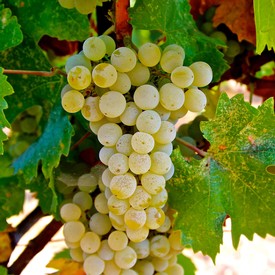
Huxelrebe—Gutedel (a.k.a., Chasselas) x Courtiller Musqué (a.k.a., Muscat Précoce de Saumur)
Kanzler—Müller-Thurgau (Riesling x Madeleine Royale) x Silvaner
Kerner—Trollinger x Riesling
Macabeo (a.k.a., Viura)
Malbec (a.k.a., Auxerrois)
Marsanne
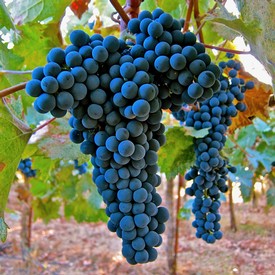
Marzemino
Mencía
Merlot
Mission (a.k.a., Listan Prieto; Pais)
Montepulciano
(photo: ewineasia.com)
Morenillo

Morio Muscat—Silvaner x Pinot blanc
Moscato Giallo (a.k.a., Yellow Muscat)
Mourvèdre (a.k.a., Mataró; Monastrell)
Müller-Thurgau—Riesling x Madeleine Royale
Muscat Canelli (a.k.a., Muscat blanc; Muscat blanc à Petits Grains)
Nebbiolo
Nero d’Avola
Noblessa—Madeleine Angevine (Circe x Madeleine Royale) x Silvaner
Optima—(Riesling x Silvaner) x Müller-Thurgau (Riesling x Madeleine Royale)
Oraniensteiner—Riesling x Silvaner
Orange Muscat
Ortega—Müller-Thurgau (Riesling x Madeleine Royale) x Siegerrebe (Madeleine Angevine [Madeleine Royale x Précoce de Malingre] x Gewürztraminer)
Parellada
Perle—Gewürztraminer x Müller-Thurgau (Riesling x Madeleine Royale)
Petit Verdot
Petite Sirah (a.k.a., Durif)—Syrah x Peloursin
Phoenix—Bacchus ([Silvaner x Riesling] x Müller-Thurgau [Riesling x Madeleine Royale]) x Villard blanc (Le Subereaux x Siebel 6468)Villard blanc (Le Subereaux x Siebel 6468)
Pinot blanc (a.k.a., Weissburgunder; Klevner)
Pinot gris (a.k.a., Pinot grigio; Grauburgunder; Ruländer)
Pinot Meunier (a.k.a., Schwarzriesling)
Pinot noir (a.k.a., Spätburgunder; Blauburgunder)
Pinotage—Pinot noir x Cinsaut
Piquepoul (a.k.a., Picpoul blanc)
Prieto Picudo
Primitivo (a.k.a., Zinfandel)
Prinzipal—Geisenheim 323-58 (Siebel 7053 x Riesling) x Ehrenfelser (Riesling x Silvaner)
Räuschling
Regent—(Silvaner x Müller-Thurgau) x Chambourcin (unknown Seibel-based hybrid)
Ribolla Gialla (a.k.a., Ribolla; Rumena rebula)
Rieslaner—Silvaner x Riesling
Riesling
(photo: tickeragewine.co.uk)
Rondo—Zarya Severa (Vitis amurensis x Malingre Précoce) x St. Laurent
Rotberger—Trollinger x Riesling
Roter Traminer (a.k.a., Savagnin Rose)
Roter Veltliner (a.k.a., Roter Muskateller)
Rotgipfler
Roussanne
Saint-Macaire
Sangiovese
Sauvignon blanc (a.k.a., Sauvignon; Fumé blanc)
Sauvignon Musqué (a.k.a. Sauvignon blanc)
Scheurebe—Riesling x unknown
Schönburger—Pinot noir x (Chasselas x Muscat Hamburg)
Sémillon
Siegerrebe—Madeleine Angevine (Madeleine Royale x Précoce de Malingre) x Gewürztraminer
Silvaner (a.k.a., Sylvaner)
Sirius—Bacchus ([Silvaner x Riesling] x Müller-Thurgau [Riesling x Madeleine Royale]) x Seyve Villard 12-375
Souzão
St. Laurent
Sultana (a.k.a., Thompson Seedless)
Symphony—Muscat of Alexandria x Grenache gris
Syrah (a.k.a., Shiraz)
Tannat
Tempranillo (a.k.a., Tinta Roriz; Tinta de Toro; Tinta Fino; Valdepeñas)
Teroldego
Tinta Amarela (a.k.a., Trincadeira Preta)
Tinta Cão
Torrontés
Touriga Francesa (a.k.a., Touriga Franca)
Touriga Nacional
Traminer
Trollinger (a.k.a., Schiava)
(photo: italyabroad.com)
Uva Longanesi
Verdejo
Verdelho
Vermentino (a.k.a., Rolle; Pigato; Favorita)
Vidiano
Viognier
Würzer—Gewürztraminer x Müller-Thurgau (Riesling x Madeleine Royale)
Xarel-lo
Zinfandel
Zweigelt
Randy Caparoso is a full-time wine journalist who lives in Lodi, California. Randy puts bread (and wine) on the table as the Editor-at-Large and Bottom Line columnist for The SOMM Journal, and currently blogs and does social media for Lodi Winegrape Commission’s lodiwine.com. He also contributes editorials to The Tasting Panel magazine, crafts authentic wine country experiences for sommeliers and media, and is the author of the new book “Lodi! A definitive Guide and History of America’s Largest Winegrowing Region.”
Have something interesting to say? Consider writing a guest blog article!
To subscribe to the Coffee Shop Blog, send an email to stephanie@lodiwine.com with the subject “blog subscribe.”
To join the Lodi Growers email list, send an email to stephanie@lodiwine.com with the subject “grower email subscribe.”
To receive Lodi Grower news and event promotions by mail, send your contact information to stephanie@lodiwine.com or call 209.367.4727.
For more information on the wines of Lodi, visit the Lodi Winegrape Commission’s consumer website, lodiwine.com.
For more information on the LODI RULES Sustainable Winegrowing Program, visit lodigrowers.com/standards or lodirules.org.

